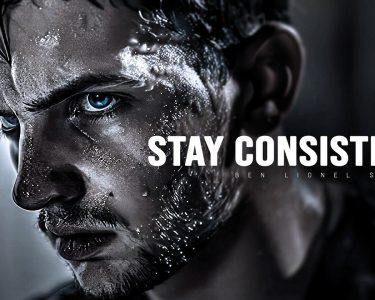Are you tired of feeling sluggish, unmotivated, and unhappy with your body? It’s time to break out of the cycle of being a couch potato and become a fitness enthusiast! The benefits of exercise go far beyond just physical health – it can transform your entire outlook on life. In this blog post, we’ll explore how starting an exercise routine can lead to increased confidence, improved mental health, and a more positive mindset. Get ready to feel empowered and inspired as we dive into the incredible transformations that come from moving your body.
The Benefits of Exercise
Exercise has so many benefits that it’s hard to know where to start. For one, it can help you maintain a healthy weight and body composition. It also improves your mood and reduces stress levels.
Exercise has been shown to be an effective treatment for mild to moderate depression and can even help improve cognitive function. Furthermore, regular physical activity can help reduce your risk of developing chronic diseases such as heart disease, stroke, type 2 diabetes, and some forms of cancer.
So what are you waiting for? Get up and get moving! Your mind and body will thank you for it.
How to Get Started with Exercise
If you’re starting from zero, don’t worry! Getting into shape and improving your fitness level is totally doable, no matter how much you currently exercise (or don’t). Here are some tips to get you started:
1. Set realistic goals. You’re not going to transform your body overnight, so it’s important to set goals that are achievable. Maybe start by committing to walking for 30 minutes a day, three times a week. Or, if you’re already somewhat active, aim to add one new workout to your routine each week.
2. Find an activity you enjoy. If you hate running, there’s no need to force yourself to do it just because it’s “good for you.” There are plenty of other exercises out there that can provide the same benefits without making you miserable. Try different things until you find something that really clicks for you – whether it’s swimming, biking, or taking a dance class.
3. Make it convenient. Choose an exercise routine that fits easily into your lifestyle so it’s less likely to fall by the wayside. If going to the gym is a major production, consider working out at home with some basic equipment, or using your bodyweight for exercises like push-ups and squats. And if time is really tight, remember that even 10 minutes of exercise is better than nothing!
4. Get support from others. It can be helpful to have someone else holding you accountable – whether it’s a
Types of Exercise
There are many different types of exercise, and each has its own benefits. One of the best ways to get started with exercising is to find an activity that you enjoy and that fits your lifestyle.
Aerobic exercise is a great way to improve your cardiovascular health and increase your overall fitness level. Some examples of aerobic exercise include walking, running, biking, swimming, and dancing.
Strength training is another type of exercise that can help you build muscle and strength. lifting weights, using resistance bands, or doing bodyweight exercises are all great ways to strength train.
Flexibility and balance exercises are important for maintaining mobility as we age. Yoga, Pilates, and Tai Chi are all great options for increasing flexibility and improving balance.
No matter what type of exercise you choose, be sure to start slowly and gradually increase your intensity as you become more fit. And remember, the best way to stick with an exercise program is to find activities that you enjoy and that fit into your lifestyle.
Overcoming Exercise Barriers
There are many barriers that can prevent people from exercising, but there are also ways to overcome these barriers. Some common exercise barriers include lack of time, lack of motivation, and lack of energy.
Lack of time is often cited as a barrier to exercise, but there are ways to work around this. For example, you can wake up earlier to fit in a morning workout, or use your lunch break as an opportunity to go for a walk or run. If you have trouble fitting exercise into your schedule, try breaking up your workouts into smaller chunks of time throughout the day.
Lack of motivation is another common barrier to exercise. To overcome this, it can help to set realistic goals and reward yourself for reaching them. For instance, if your goal is to lose weight, you could give yourself a small treat after each workout or once you reach a certain milestone. It can also be helpful to find an exercise buddy who can help keep you accountable.
Last but not least, lack of energy can be a big obstacle to getting active. If you’re feeling tired all the time, it may be tempting to just skip your workout altogether. But there are some simple changes you can make to boost your energy levels. For example, eating a nutritious diet and getting enough sleep are both important for maintaining energy levels throughout the day. You might also try drinking caffeine before your workout to give yourself a little extra boost.
Making Exercise a Habit
From someone who used to be a couch potato, I know how hard it is to make exercise a habit. It’s easy to find excuses not to work out, but once you get into the habit of exercising regularly, you’ll see how much better you feel both physically and mentally.
Here are a few tips to help you get started:
1. Set realistic goals. Trying to do too much too soon is one of the biggest reasons people give up on exercise. Start slow and gradually increase your activity level.
2. Find an activity you enjoy. If you hate running, don’t force yourself to do it just because someone told you it’s good for you. There are plenty of other options out there – find something that makes you WANT to move your body.
3. Make a plan. Decide when and where you’re going to exercise, and put it in your calendar like any other appointment. This will help you stick to your routine.
4. Find a buddy. Having someone to exercise with can make it more fun and help keep you accountable.
5. Be prepared. Make sure you have the right gear and equipment so that working out is as convenient as possible. There’s nothing worse than getting all psyched up to exercise only to realize you don’t have anything comfortable to wear or that your sneakers are all worn out!
Conclusion
Exercise is a powerful tool for improving your overall outlook on life. Whether you’re just starting out or have been working out for years, it’s an important part of staying healthy and feeling good about yourself. The impact that regular exercise can have on your mental and physical health is extraordinary; from improved energy levels to better sleep and a sharpened focus. Start small with achievable goals and before long, you’ll find yourself feeling more confident, energized, motivated – like a whole new person!




